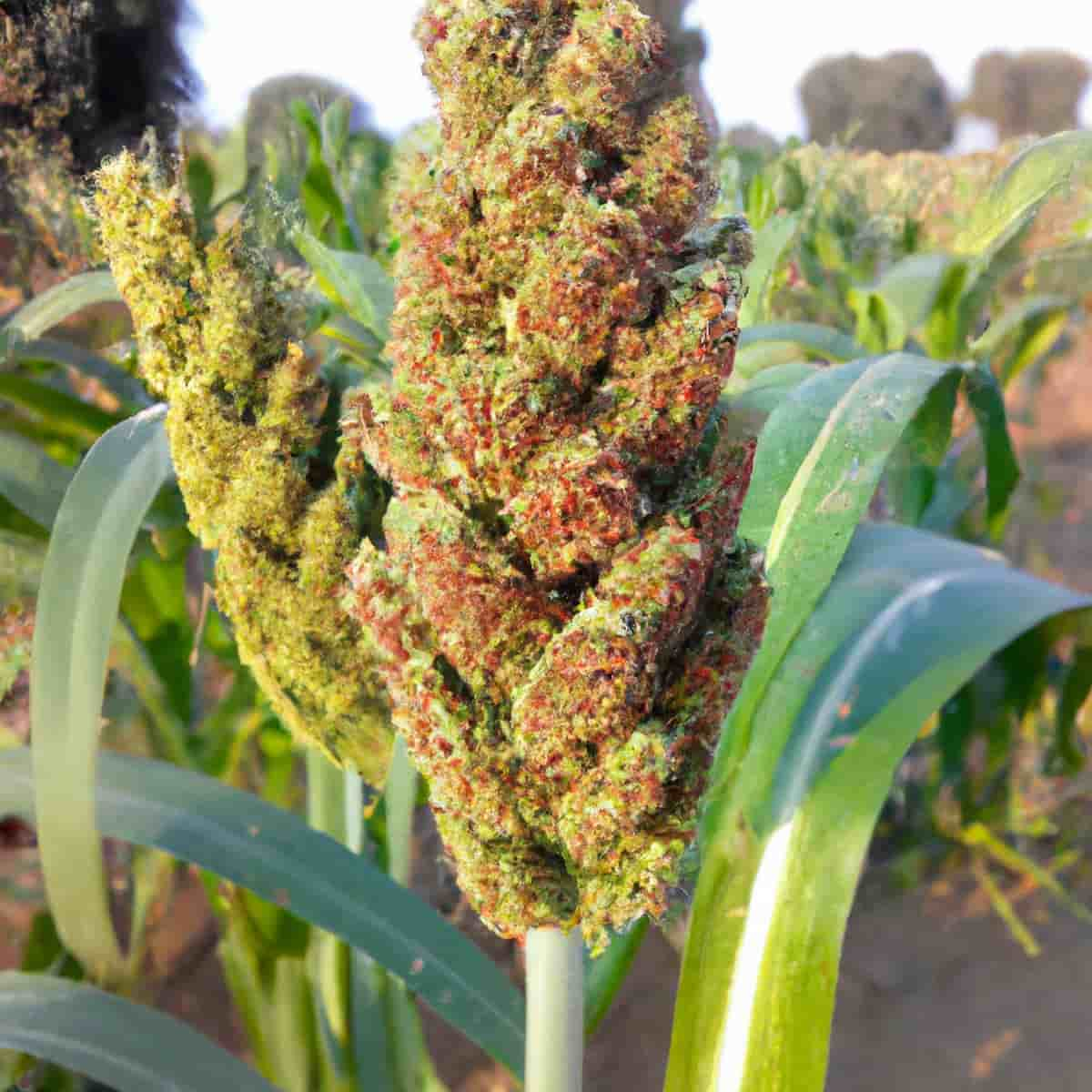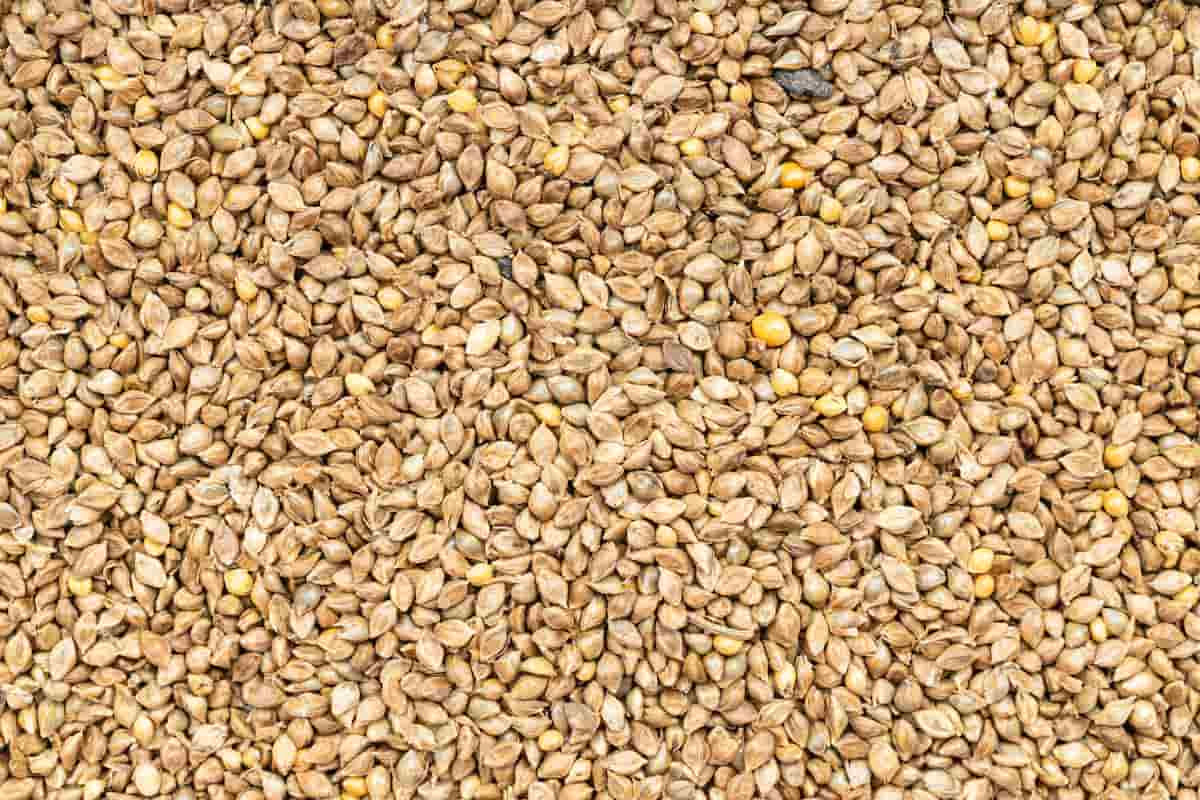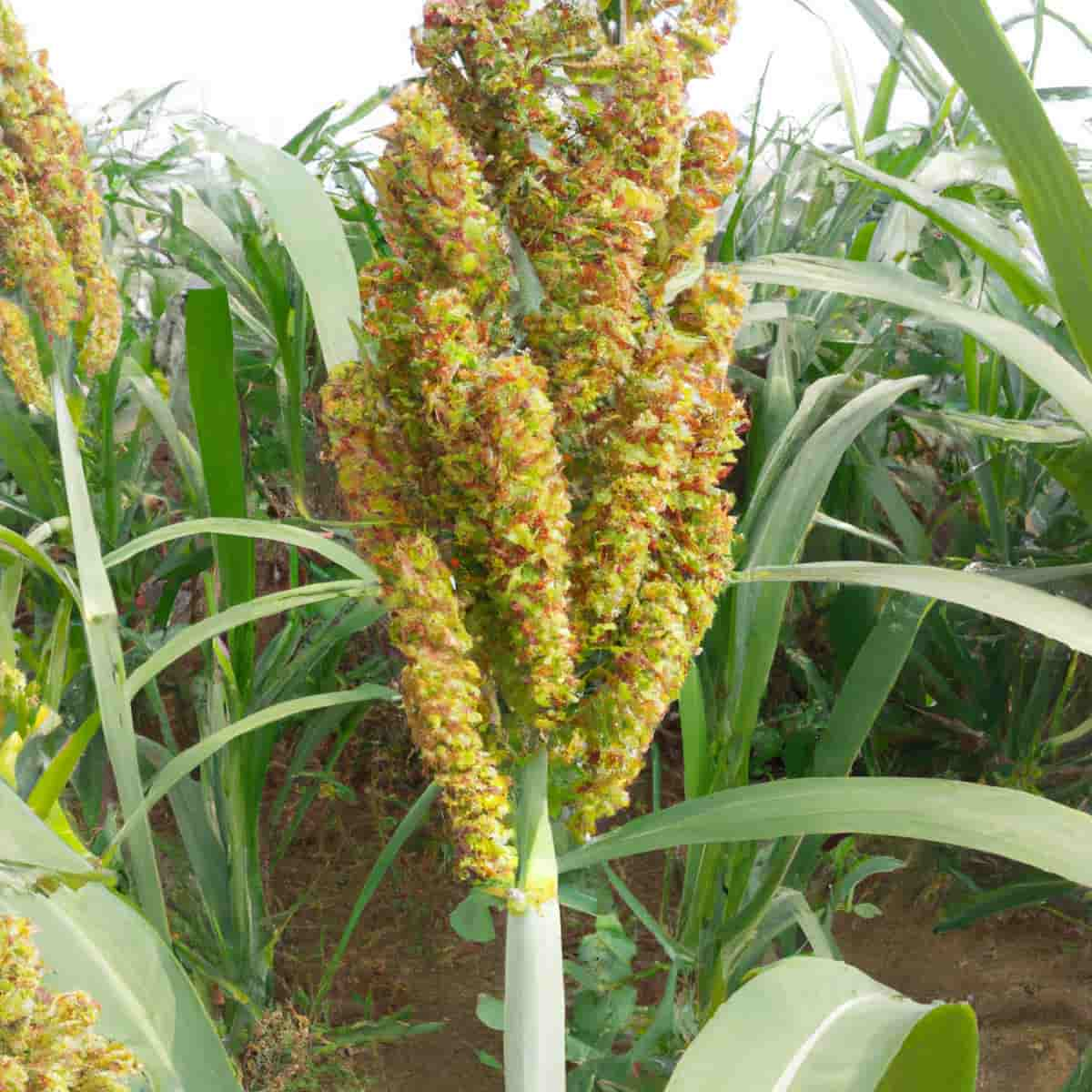Barnyard millet is a small-seeded, drought-resistant crop that grows well in dry regions. Its grain is a rich source of carbohydrates, fiber, protein, and micronutrients like zinc and iron. Millets have a short growing season, maturing in just 65 days, making them vital for densely populated areas. Properly stored, millets can last for two or more years. Millets are a top protein source with high digestibility and dietary fiber, including soluble and insoluble fractions. They are a significant food source in arid regions and a staple in traditional cuisine.

Barnyard Millet (Sanwa) Production Guide
Best Package and Practices of Barnyard millet High Production
The most crucial factor in increasing Barnyard millet yield is the selection of short-duration, high-yielding varieties that are also disease-resistant, drought-tolerant, and agro-climatically suitable. Wide different varieties of barnyard millet have been introduced recently.
Land/ Field Preparation and Soil Requirements for Barnyard Millet
Barnyard millet can grow on various soil types but prefers well-draining sandy loam with moderate fertility. It cannot tolerate waterlogging and does best on red lateritic loams with a pH of 5.6.
Temperature, Climatic, and Rainfall Requirements for Barnyard Millet
Barnyard millet is a versatile crop that can withstand a wide range of temperatures and altitudes, up to 2700m above sea level, with 200-400mm of annual rainfall. It grows all year round in the tropics, between 1000-2000m above sea level. It requires well-distributed 600-800mm rainfall during the growing season without prolonged droughts. It thrives in areas with average maximum temperatures above 27°C and minimum temperatures not below 18°C. High-humidity regions are unsuitable for cultivation.
Propagation Method and Seed Quality for Barnyard Millet
Barnyard millet propagates through seeds and seedlings. It should be made of seeds with a high rate of emerging. The seedlings need to get a fungicide treatment before planting.
Seed Treatment for Barnyard Millet
To prevent seed-borne diseases, the seed must be treated with 2 to 3 grams of Thiram and Agrosan G.N. antifungal agents per kilogram of seed.
Seed Rate and Spacing for Barnyard Millet
A minimum of 25 centimeters distance between rows and 10 cm must separate plants within a row. The seed rate for broadcasting is 12 to 15 kg per hectare, and for line sowing, it is 8 to 10 kg per hectare.
In case you missed it: Pearl Millet Production Guide: A Step-By-Step Cultivation Practices

Sowing Method for Barnyard Millet
The primary method of growing barnyard millet is to raise nurseries and transplant the seedlings into the main area. Tillering is supported better and more quickly by planting shallowly (5 centimeters). Even during rain, the transplanted produce does not lodge.
Crop Rotation and Intercropping in Barnyard Millet
Crop rotation with other cereals like finger millet or sorghum can reduce pest infestation and improve soil health. In contrast, intercropping barnyard millet with legumes like cowpea or soybean can greatly increase grain yield and nitrogen fixation. Increased yields from agriculture may result from adopting such methods
Manure & Fertilizer Applications in Barnyard Millet
Composted farm waste at a rate of 5-10 tons per hectare has been sown to improve yields. Per acre, 40 kilograms of nitrogen, 30 kilograms of phosphorus, and 50 kilograms of potassium are all good additions. Generally, fertilizer should be applied to the soil just before planting. Twenty-five to thirty days after planting, if irrigation is available, half of the nitrogen should be applied as a top dressing to the crop.
Weed Management and Herbicide Application in Barnyard Millet
Twenty-five to thirty days after planting, the field must still be weed-free. The weeds in a barnyard millet area can be managed with just two weddings. Using a manual hoe or a wheel hoe is acceptable for weeding a crop sown in a straight row.
Water Management in Barnyard Millet
The crop does not thrive in saturated soils. It is typically cultivated under rainfed conditions. It has been noticed that the ideal soil moisture level for the greatest yield is around 50%. The amount of irrigation varies depending on the season’s rainfall. To grow a healthy crop, rainfall of about 450 mm must be supplemented by irrigation of 130 minutes. When required, irrigations are carried out based on the type of soil. Sufficient moisture is required at the flowering, tillering, and kernel-filling stages.
Disease Control in Barnyard Millet
Barnyard millet is susceptible to diseases like leaf spot or blight, leaf blast, and smuts. Grain smut caused by Ustilago panicifrumentacei is significant, although the crop is affected by three different smuts. Pre-sowing treatment of seeds with Carbendazim or Thiram at 2g per kg of the seed helps control the disease. Head smut, caused by Ustilago crusgalli, can be managed by seed treatment with Carbendazim or Thiram before sowing.
Kernel smut caused by Ustilago paradoxa results in swollen greenish grains, and seed treatment with systemic fungicides helps control it. Leaf spot or blight appears as dark brown, spindle-shaped spots on flag leaves and can be controlled by seed treatment with systemic fungicides and spraying copper fungicides. Leaf blast, caused by Magnaporthe grisea, is characterized by spindle to circular spots with yellowish margins and greyish centers. Seed treatment with Thiram or Carbendazim, sowing early, and replacing 25% N with compost or FYM can help reduce its severity.
Pest Control in Barnyard Millet
Barnyard millet is mainly affected by hairy caterpillars (Amsacta albistriga), while jassids, beetles, and grasshoppers cause periodic damage. Monocrotophos 0.05% or Endosulphan (0.07%) can efficiently control beetles, caterpillars, and jassids, whereas Benzene hexachloride (BHC) 10% can control grasshoppers during the early stages of infection. Shoot fly is the most serious pest that causes significant yield losses, and early sowing with the onset of monsoon is the cheapest and most effective control method.
Harvesting and Threshing of Barnyard Millet
Barnyard millet matures faster in the plains than in hills, and cultivated varieties vary in susceptibility to shattering. Typically, 3 to 4 pickings are necessary to collect ear heads from the field, and more pickings are required when a mixture of varieties is grown. Hand harvesting of ear heads requires significant labor. The crop should be harvested when ripe, using sickles to cut it from ground level. After harvesting, the crop is stacked in the field for about a week before threshing is done by trampling it under the feet of bullocks.
Barnyard Millet Yield per Acre
Combine harvesting should be adjusted to thresh the small seed of barnyard millet properly. An irrigated crop can yield 25 to 35 quintals per hectare, while a rain-fed crop can produce 12 to 15 quintals per hectare.
In case you missed it: Finger Millets Production Guide: A Step-By-Step Cultivation Practices

Conclusion
Barnyard Millet (Sanwa) is a highly nutritious crop that can be grown with simple cultivation practices. Proper land preparation, irrigation, and seed treatment can help control diseases and pests. Harvesting at the right time and using appropriate threshing methods can maximize yields.